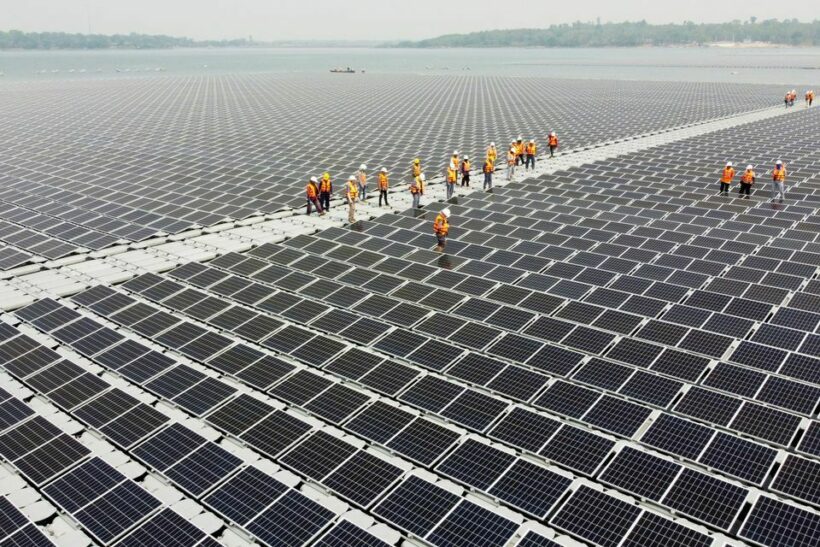Northeast floating farm marks Thailand’s moves toward green energy

A new solar farm in Thailand’s Northeast that floats on water is one of 15 that Thai authorities plan to build by 2037. The project aims to reduce CO2 emissions by 47,000 tonnes a year. Officials also hope the first farm in Ubon Ratchathani will attract tourists. They are calling it the “world’s largest floating hydro-solar farm”.
Thailand is trying harder to decrease fossil fuels. At the COP26 climate conference in Glasgow, Scotland last year, PM Prayut set the carbon neutrality goal for 2050, as well as a goal to have net-zero greenhouse emissions by 2065.
The newly installed solar panels cover 720,000 square meters of water surface, and use a hybrid system that converts sunlight to electricity by day and generates hydropower at night. The project includes a ‘Nature Walkway’ shaped like a sun ray.
Electricity authorities claim the farm will not impact agriculture, fishing or other community activities.
Thailand currently still relies heavily on fossil fuel. The country’s Energy Policy and Planning Office said in October 2021, 55% of power came from natural gas. It said 11% came from renewables and hydropower.
The Ubon Ratchathani farm took almost two years to build, partly because of Covid-19 and workers getting sick. It began generating power in November. It costed $35 million.
SOURCE: Manila Times | Bangkok Post
Latest Thailand News
Follow The Thaiger on Google News:


























